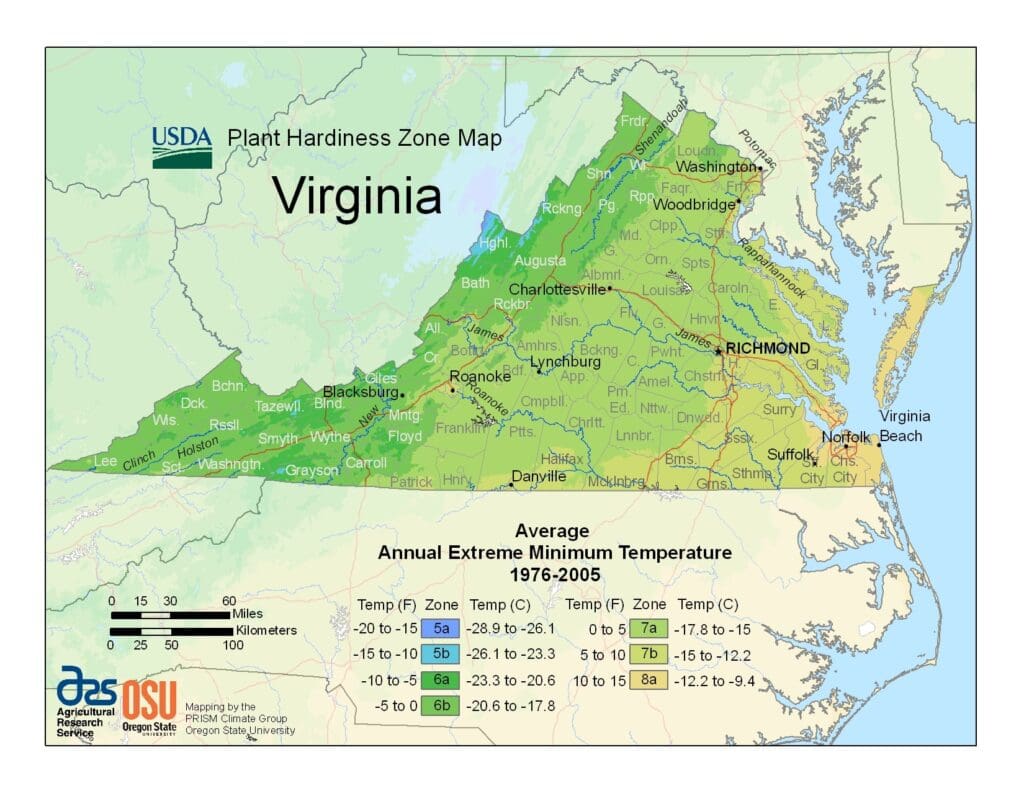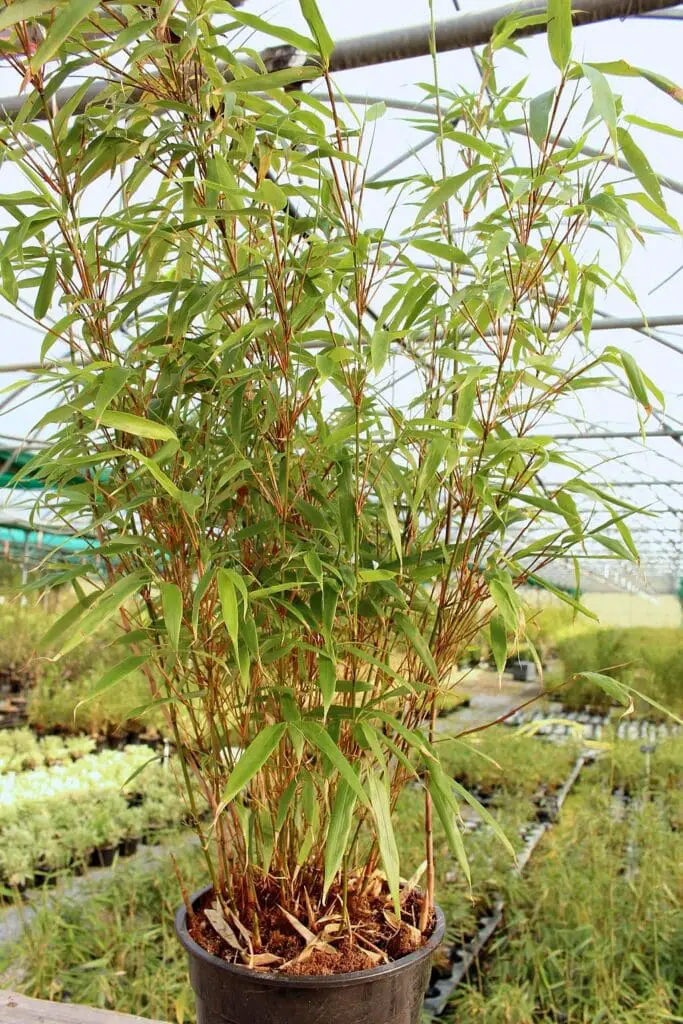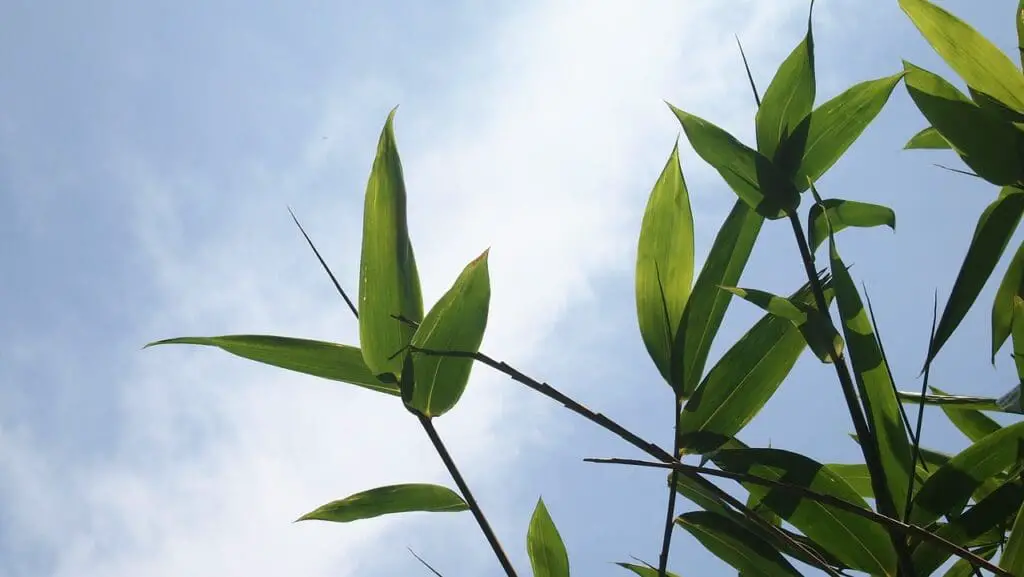Growing Bamboo In Virginia
Bamboo, although not native to Virginia, can be successfully cultivated throughout the state due to its resilience and adaptability.
The temperate climate, moderate rainfall, and relatively mild winters in Virginia create an optimal environment for bamboo growth. However, it is essential to manage bamboo carefully as certain species can become invasive and rapidly spread.
This article will provide insights into selecting appropriate bamboo species, considering climate and soil conditions, optimizing growing conditions, managing invasive species, understanding bamboo’s growth characteristics, and identifying common bamboo species found in Virginia.
Ideal Bamboo Varieties
When considering the ideal bamboo varieties for growing in Virginia’s climate and soil conditions, it is crucial to ensure the selection of cold-hardy species that can thrive in the state’s colder winter temperatures.
For colder climates, some recommended bamboo varieties include Phyllostachys bissetii, Fargesia robusta, and Phyllostachys aureosulcata. These species are known for their ability to withstand lower temperatures and are suitable for Virginia’s winters.
Additionally, for shade conditions, options like Semiarundinaria fastuosa or Sasa palmata can be considered as they tolerate lower light levels.
Further, if erosion control is a concern, running bamboo varieties such as Phyllostachys heteroclada or Pseudosasa japonica are excellent choices due to their spreading rhizomes that help stabilize soil on slopes. However, planting a running bamboo variety should be done with care. Without proper management, running bamboo varieties can quickly get out of control and become invasive of surrounding areas.
Climate and Soil Considerations
Virginia’s climate and soil conditions play a crucial role in determining the suitability of bamboo species for cultivation. When considering growing bamboo in Virginia, it is important to choose varieties that are well-adapted to the region’s temperate climate, moderate rainfall, and relatively mild winters. Cold-hardy bamboo species are recommended to withstand colder temperatures.

Additionally, selecting bamboo varieties that thrive in Virginia’s soil composition is essential for successful growth.
Plant Selection and Advice
One important factor to consider is selecting the appropriate bamboo species that are well-suited for the specific climate and soil conditions of the region. When choosing the right bamboo for growing in Virginia, it is advisable to consult a horticulturist or local plant nursery for expert advice. They can recommend cold-hardy bamboo species that can withstand Virginia’s colder winter temperatures.
It is recommended to choose clumping bamboo varieties and avoid invasive running varieties to prevent potential problems with rapid spreading and invasion.
Here are 5 clumping bamboo varieties suitable for growing in Virginia.
| Species | Description | Average Height | Cold Tolerance |
|---|---|---|---|
| Bambusa multiplex ‘Alphonse Karr’ | Bright yellow canes, very popular | 20 ft | 0°F |
| Bambusa textilis ‘Gracilis’ | Slender green canes, compact | 6-8 ft | -10°F |
| Fargesia rufa | Burgundy red canes | 12-15 ft | -10°F |
| Fargesia nitida ‘Blue Fountain’ | Bluish-green culms, fountain shape | 4-6 ft | -20°F |
| Chusquea coronalis | Green culms with yellow stripes | 10-15 ft | 5°F |
Optimal Growing Conditions
To create an optimal environment for bamboo growth, it is important to consider factors such as soil drainage, sunlight exposure, and regular watering.
Bamboo thrives in well-draining soil that allows excess water to flow away from the roots. It is crucial to avoid waterlogged conditions as they can lead to root rot and hinder growth.
Additionally, bamboo requires ample sunlight for photosynthesis and healthy development. Ideally, it should receive at least six hours of direct sunlight daily.
Temperature requirements vary among different bamboo species, but most are adaptable to Virginia’s climate. However, cold-hardy varieties are recommended for the colder winter temperatures in the state.
By selecting a suitable location with ideal sunlight exposure, ensuring proper soil drainage, and providing adequate watering, gardeners can create favorable conditions for successful bamboo cultivation in Virginia.
Watering and Drought Tolerance
Watering is a crucial aspect of bamboo cultivation as it plays a vital role in ensuring the plant’s survival and growth, especially considering its impressive drought tolerance.
While bamboo is known for its ability to withstand dry conditions, regular watering is still necessary, particularly during periods of prolonged drought.
Adequate irrigation techniques are essential to maintain healthy bamboo plants. It is recommended to water deeply and infrequently rather than frequent shallow watering. This encourages the roots to grow deeper into the soil, making the plant more resilient to drought stress.
Additionally, selecting drought-resistant bamboo varieties can further enhance water efficiency and reduce water requirements.
By implementing proper watering practices and choosing suitable species, growers can effectively maintain their bamboo plants even in Virginia’s varying climate conditions.
Managing Invasive Species
Controlling the spread of invasive bamboo species is crucial to ensure their ecological impact is minimized. While bamboo can be a resilient and adaptable plant, certain species have the potential to become invasive and rapidly colonize areas, outcompeting native vegetation.
To effectively manage invasive bamboo in Virginia, it is essential to employ appropriate management techniques. These techniques may include:
- Regular monitoring of the bamboo population
- Implementing physical barriers or containment systems to restrict its spread
- Employing mechanical methods such as cutting or mowing to control growth
Additionally, chemical control methods can be used selectively under specific circumstances with caution and adherence to environmental regulations.
By actively managing and controlling the spread of invasive bamboo species through these management techniques, we can mitigate their potential negative impacts on native ecosystems in Virginia.
Bamboo Growth Characteristics
One fascinating aspect of bamboo is its ability to reach impressive heights, with some species growing up to 100 feet tall. Bamboo has a remarkable growth rate, and under ideal conditions, it can grow as much as one foot per day. This rapid growth makes bamboo one of the fastest-growing plants in the world.



Its height potential and growth rate are attributed to its unique structure and reproductive characteristics. Bamboo shoots emerge from underground rhizomes, allowing for quick expansion upward. Additionally, bamboo’s adaptability enables it to thrive in various climates and soil conditions. It can withstand both hot and cold temperatures, making it suitable for Virginia’s climate.
Furthermore, bamboo is known for its resilience and ability to recover from damage caused by harsh weather conditions or pruning. Overall, these growth characteristics contribute to the allure and popularity of growing bamboo in Virginia gardens and landscapes.
Frequently Asked Questions
Q: Can I plant bamboo in Virginia?
A: Yes, you can plant bamboo in Virginia.
Q: What should I do if bamboo starts to spread onto my neighbor’s property?
A: If bamboo starts to spread onto your neighbor’s property, it is important to address the issue. You can either contain the bamboo by erecting a physical barrier or contact a professional to help you manage its growth.
Q: Are there any restrictions on growing bamboo in Virginia?
A: It is important to check with your local county or town ordinances to determine if there are any restrictions on growing bamboo in your area. Some areas may have regulations in place to control the spread of running bamboo.
Q: Can bamboo be used as a privacy screen?
A: Yes, bamboo can be used as a privacy screen. Its dense foliage and tall stature make it a great choice for creating privacy in your yard.
Q: Is bamboo a hardy plant in Virginia?
A: Yes, bamboo is a hardy plant in Virginia. It can tolerate a wide range of soil conditions and weather conditions.
Q: Can bamboo be grown in tight spaces?
A: Yes, bamboo can be grown in tight spaces. There are dwarf varieties available that are more suitable for small gardens or confined areas.
Q: How many new shoots does bamboo produce per year?
A: Bamboo can produce multiple new shoots per year, depending on the variety and growing conditions.
Q: Is it difficult to establish bamboo in Virginia?
A: Establishing bamboo in Virginia is not necessarily difficult, but it does require some research and proper care. It is important to choose the right type of bamboo for your specific area and follow proper planting and maintenance techniques.
Q: If I have further questions, who should I contact?
A: For more information about growing bamboo in Virginia, contact a reputable nursery or bamboo specialist. Ideally you will find someone local to you who is familiar with the local climate and conditions.
Conclusion
In conclusion, growing bamboo in Virginia is possible with the right selection of bamboo varieties that can withstand the state’s climate and soil conditions. It is important to consult with horticulturists or local plant nurseries for guidance on choosing the ideal bamboo species.
With well-draining soil, ample sunlight, and regular watering, bamboo can thrive in Virginia’s temperate climate. However, it is crucial to manage invasive species carefully as some bamboo species can spread rapidly.
Overall, Virginia’s favorable environmental factors make it suitable for growing popular bamboo species such as golden bamboo, black bamboo, moso bamboo, and dwarf bamboo.

